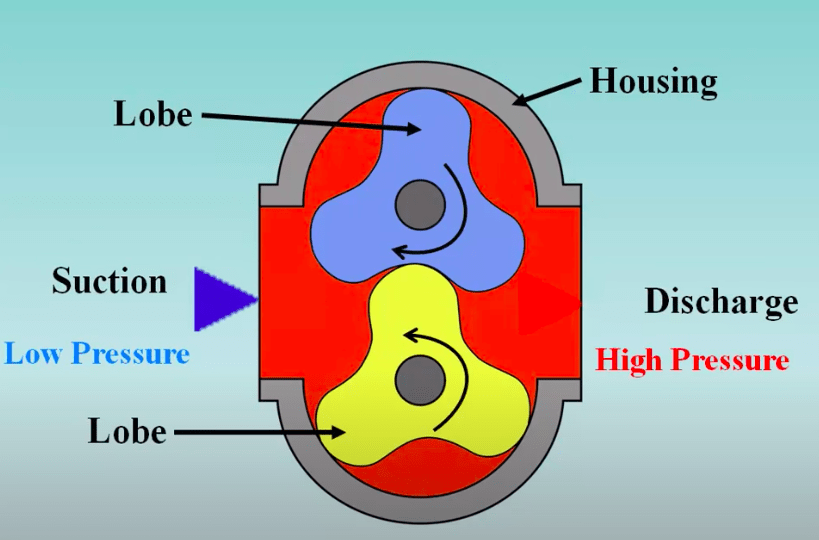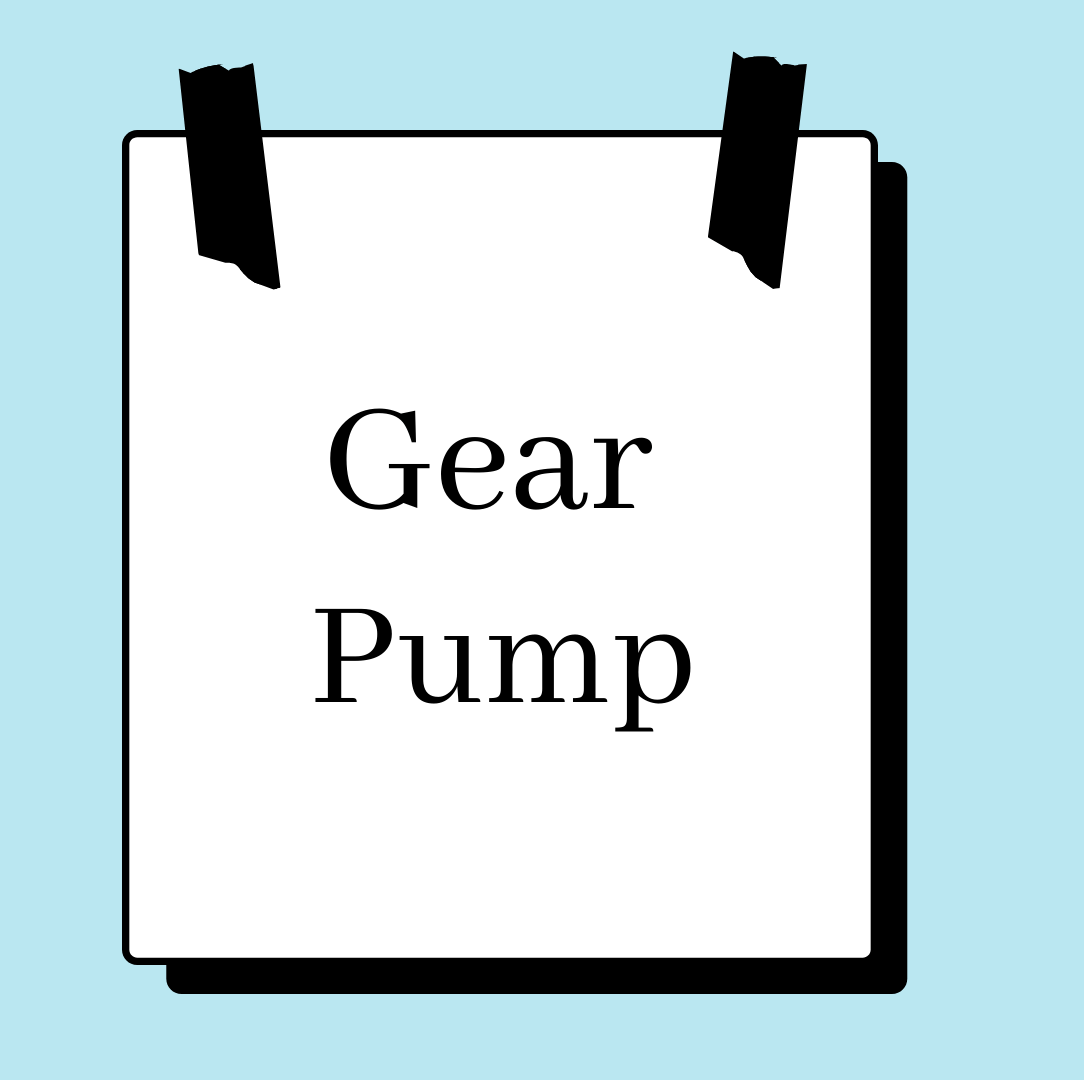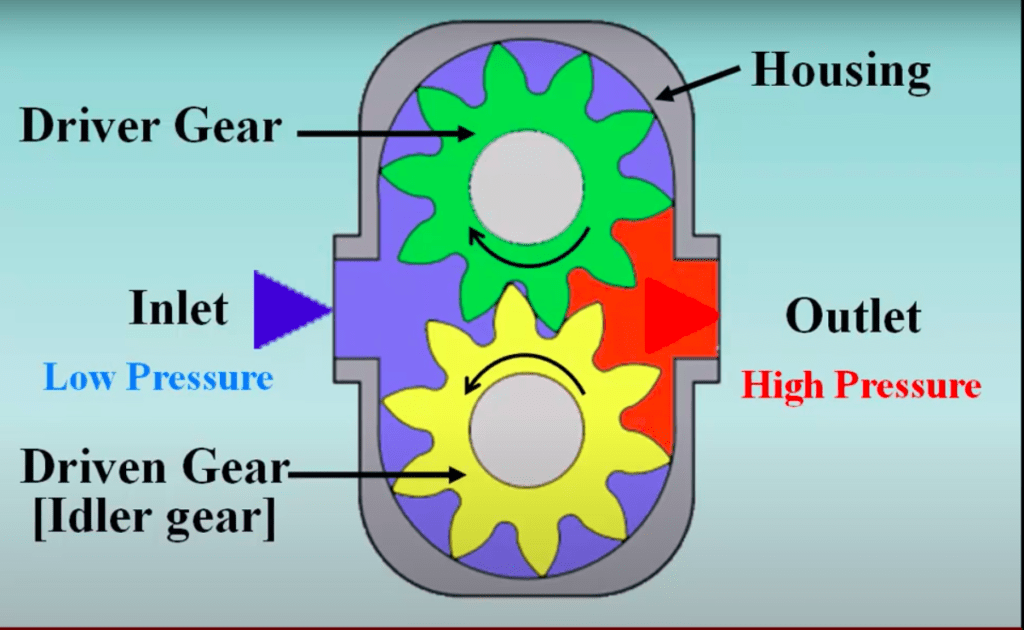
The Gear Pump is a rotary pump, a positive displacement type, used for pumping liquids.
- The pump consists of Driving Gear, Driven gear, and Casing. The driven gear is inside the casing of the pump and is mounted on bearings/bushings on both ends. The driving gear mounted on bearings/bushings is coupled to the motor and has normally a mechanical seal to prevent the leakage of liquid.
- A relief valve at the outlet as if the pressure increases more than the set pressure, then the relief valve will direct the flow of liquid back to the inlet and hence we will get a controlled pressure at the outlet.
- Because of close clearance between the casing and teeth of gears, pressure is developed and we get one pressurized fluid at the end.
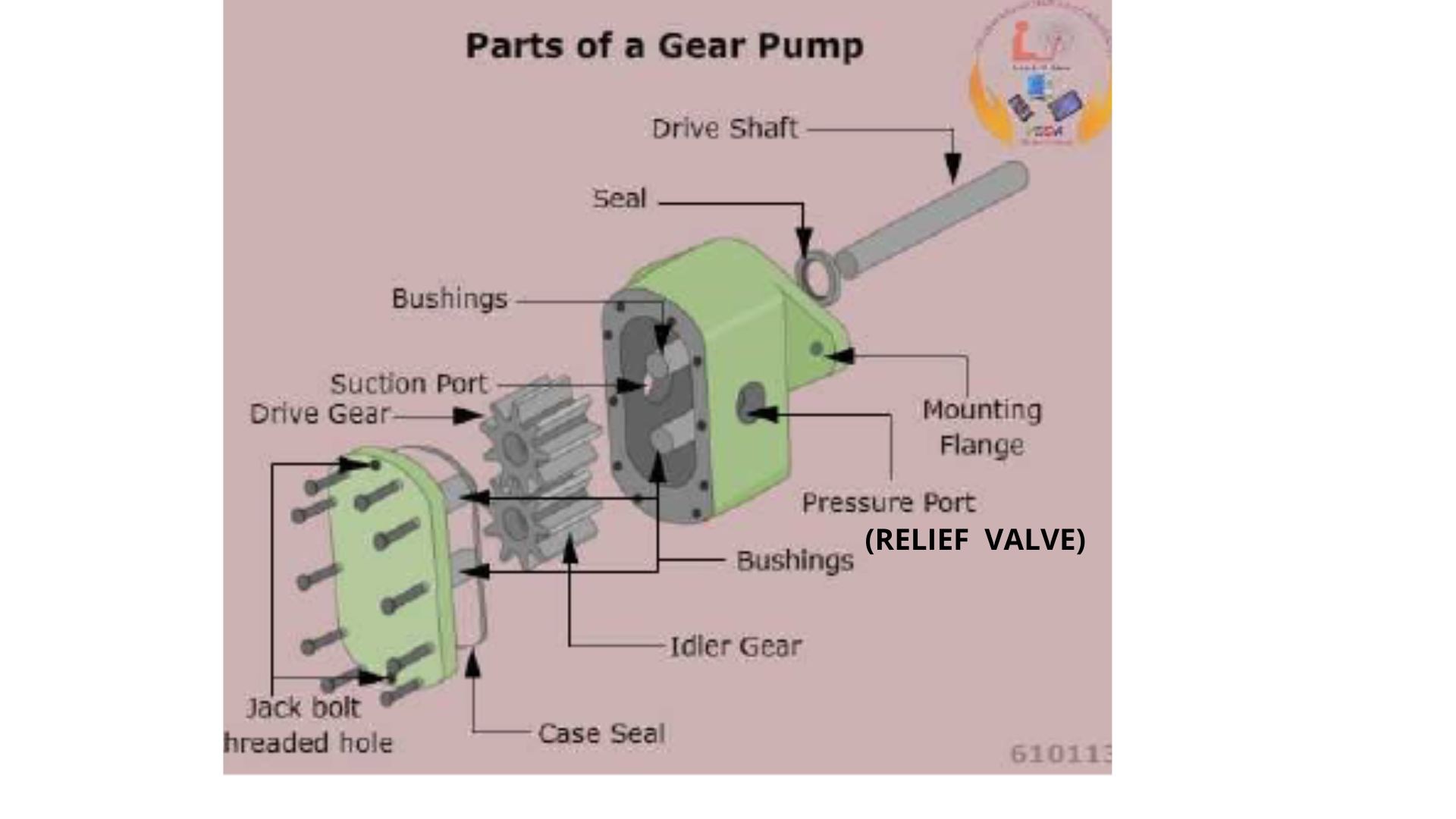
Table of Contents
ToggleWorking of Gear Pump
Fluid comes to the inlet side and when the fluid moves forward due to the vacuum created behind the teeth of two gears, it starts getting trapped inside the teeth of the gear.
This trapped liquid passes through the region of fine clearance between the casing and teeth. Since there is no space to go anywhere, trapped liquid gets compressed and when the outlet side comes, this pressurized fluid rush towards the outlet of the pump. The relief valve monitors the pressure of this coming fluid and performs accordingly.
Note:- The mechanical clearances are small in the order of 10-micron metres. The tight clearances, along with the speed of rotation, effectively prevent the fluid from leaking backwards.
What are the main features of the Gear pump?
- It is self-priming in nature.
- It can handle only oil as the gears require lubrication
- The discharge rate is slow.
- The gear pump is direction sensitive and the pump can not run in the reverse direction.
- Generator or attached lube oil pumps are of this type.
- The rigid design of the gears and housing allow for very high pressures and the ability to pump highly viscous fluids.
What is Backlash in Gear Pump ?
Backlash is the small gap provided between the two gears. It is important because due to heat, little expansion of teeth will be there.
If we don’t have backlash so when the pump rotates in opposite direction by mistake, so the sudden load comes on to the motor and it will trip on overload
What are the maintenance carried out in Gear Pump ?
- Check the condition of the mechanical seal.
- Check the backlash clearance, if this is more than the permissible limit as given in the manual, the gears need to be changed. Please record the backlash clearances to refer in future.
- Inspect the amount of leakage in the oil seal.
- Make sure to turn the drive shaft with your hand and should turn without any wobbling
- Check the condition of the shaft, sliding surface and any kind of bend in the shaft.
- Check the conditions of the bearings or bushings.
- Relief valve to be checked and the close clearance between Gear & Body or Teeth or casing. If close running clearance is more then the slip will take place.
What are the preparations done before overhauling the Gear pump ?
- Make sure that the necessary spare parts are available – Oil Seal, Bushings/ bearings
- Switch off the Power supply to the Motor and remove the fuse.
- Shut the outlet and inlet valves from /to the pump Keep a warning sign indicating that the motor should not be turned on as the work is in progress
- Remove the coupling bolts and the foundation bolts of the motor and slightly push the motor back.
- While moving the motor back, please take the shims if any, below the motor under the foundation bolts – These might have been used for the alignment and keep the shims in the same order for reuse.
- Remove the flange bolts in both inlet and delivery pipelines. Make sure to inspect the joints for any damages after the pump is removed from its foundation.
- Remove the foundation bolts, and lift the pump with the inlet and delivery pipelines to the nearest place where the pump can be dismantled.
- When the pump is removed, make sure to take note of the shims if any under the foundation bolts, used for the alignment and keep them in the same order for the reuse.
- Get the foundation place cleaned while the cleaning of the pump parts are done.
- Remove the pipelines on the suction and delivery sides from the pump and have the left out oil if any poured to the tray.
How to overhaul the Gear Pump ?
- Remove the drain plug of the pump and drain the oil into the tray.
- Remove the bolts on the back cover of the pump and carefully take out the back cover.
- Always remember that both the drive and driven shafts move on two bushings, each One bush for each of the shafts sits in its place on the back cover.
- Similarly, two more bushings (one for the drive and the other for the driven) locate in the front side of the shell.
- Once the back cover is removed, the driven or idler shaft can be easily removed from both the bushings. Similarly, remove the drive shaft and the gear – if mounted on the drive shaft with the key.
- Please note–Some manufacturers make the gear integral with the shaft
- Once all the parts are removed, it should be properly cleaned
What are the different type of gear pumps ?
There are mainly four types of the Gear pump. They are as follows –
- External Gear Pump
- Internal Gear Pump
- Gerotor Pump
- Lobe Pump
Internal Gear Pump
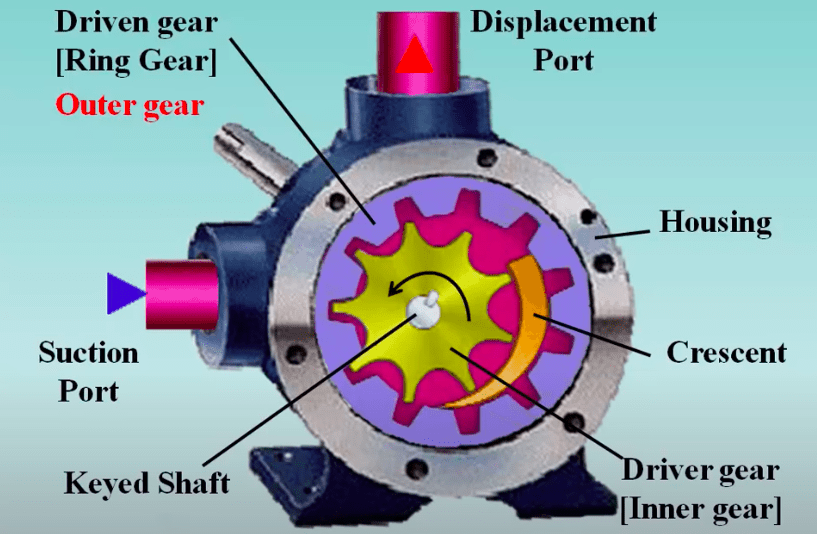
- Filling
- Transfer
- Delivery
- The hydraulic oil is drawn into the suction port between the inner and outer gears teeth.
- The hydraulic oil travels through the pump between the teeth and the crescent-shaped divides the liquid and acts as a seal between the suction and discharge boards.
- Inner and outer gears teeth mesh completely to form a seal equidistant this seal forces the liquid out of the discharge board.
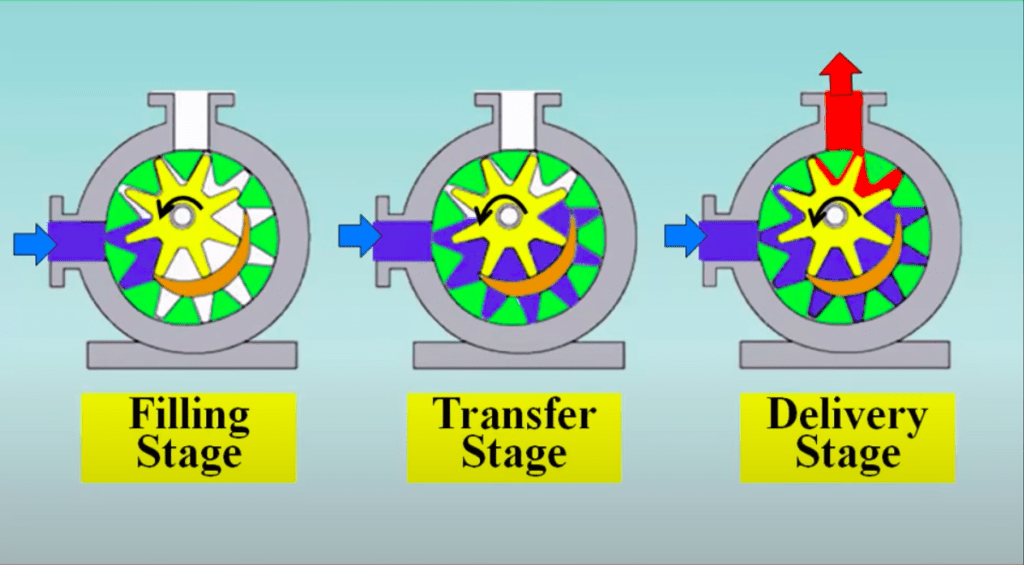
Gerotor Pump
A Gerotor is a positive displacement pump. The name Gerotor is derived from the generator. A Gerotor unit consists of an inner and outer rotor. Gerotor pumps are internal gear pumps without the crescent. The pump consists of a pair of gears which are always in sliding contact, the internal gear has one more tooth than the gerotor gear.
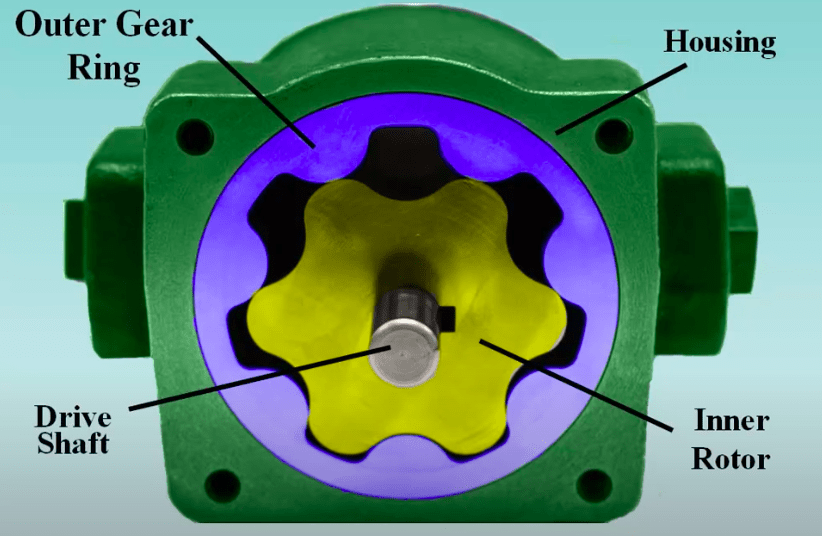
Working of Gerotor pump
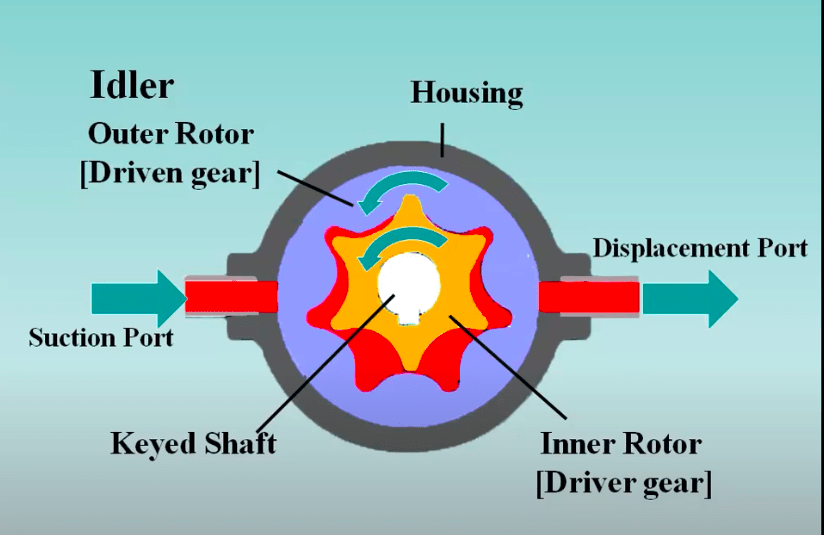
Lobe Gear Pump
